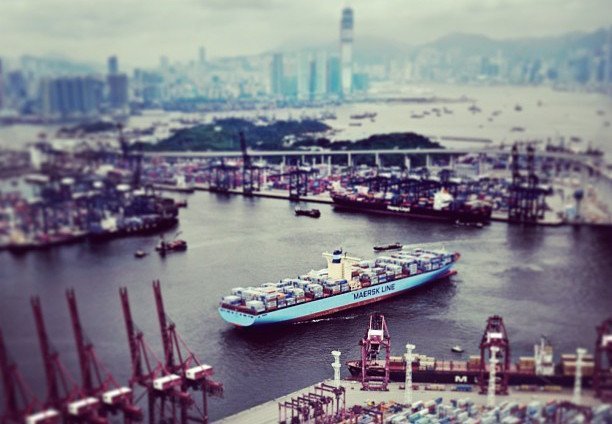Hong Kong container terminals renew plea for more land

The Hong Kong Container Terminal Operators Association (HKCTOA) has renewed its plea for more land and barge berths at the city’s Kwai Tsing port to help it stay competitive in the era of ultra-large containerships.
The HKCTOA met today with industry stakeholders and government officials to try to expedite implementation of proposals made by the Hong Kong government, and the next phase of initiatives it has promised.
“The structural changes in the world’s shipping market and the ongoing changes in the throughput mix handled in Hong Kong over the past decade have been particularly challenging to the Kwai Tsing Container Port. More ultra-large vessels berthing, alliance restructuring and additional transshipment volumes have increased the operational complexity that we all face,” said Jessie Chung, chairperson of the HKCTOA, speaking at today’s industry luncheon.
Vessel-to-vessel transshipment volumes at Kwai Tsing Container Port have risen from 44.9% in 2005 to 58.7% in 2015, Chung said. River-based container traffic in the Pearl River Delta has likewise increased from 2m teu in 2005 to 2.8m teu in 2015.
“There is an urgent need for additional barge berths and back-up land for handling the high barge and transshipment volumes, which occupy space in the terminals for longer periods of time than truck-based cargo,” Chung continued.
The Hong Kong government published its paper ‘Proposals for Enhancing the Use of Port Backup Land in Kwai Tsing’ in mid-2015, which included ideas on how land use could be rationalised in the port area.
In the document, the government proposed that Kwai Tsing’s yard-to-berth ratio be increased from the current 11.6 ha to 12.4 ha per berth in the first phase. The HKCTOA said the current yard-to-berth ratio is “far below the international standards”.
However, the government’s proposals only have addressed around one-fifth of the area that the industry says needs to be optimised and so far little has been done. The association had much the same comments to make in April last year.
HCKTOA and its partners originally proposed land optimisation and other infrastructure initiatives that would enlarge the port’s total storage area and provide for an increase in annual capacity of 3m to 4m teu, equivalent to three or four new container berths.

As Hong Kong is no longer the trading gateway to China, it’s container business has gone the way of Singapore, dominated by trans-shipment cargo. Numerous taxpayer funded studies in Hong Kong have concluded that trans-shipment cargo contributes less than 40% of what direct cargo contributes to the local economy, as local truckers, fowarders, logistics centres never touch it. Given the escalating value of land, especially waterfront land, what do you think chances are the government will allocate more land to business that is making a declining contribution to the local economy?